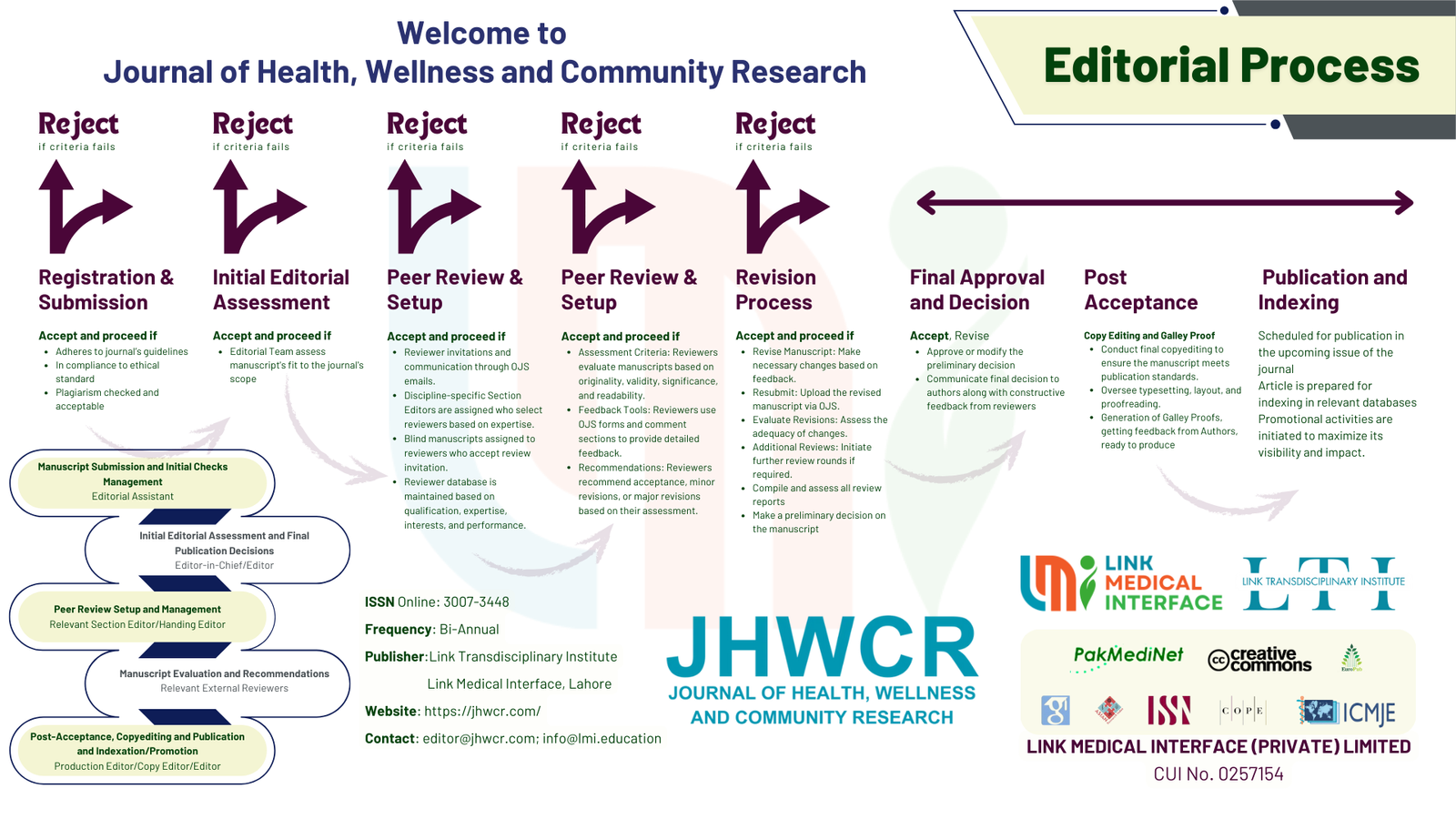Google Scholar
------------------------------------------------
PakMediNet
------------------------------------------------
PASTIC
------------------------------------------------
ResearchBib

Originality and Exclusivity:
Account and Process:
Usage:
Manuscripts must be submitted in English. Both British and American English are acceptable, though British English is preferred.
Text Specifications:
Types and Length:
Requirements:
Usage:
Specifications:
Style and Formatting:
Standards:
Word Limit: Typically 250 words; up to 350 words in exceptional cases.
Content Structure:
Background: Briefly introduce the problem or area of research interest, including specific objectives.
Methods: Describe the study design, duration, setting, population, sampling methods, data collection, and analysis plans.
Results: Summarize the key findings of the study.
Conclusion: Provide a concise interpretation of the results.
Text Structure
The main body should adhere to the IMRAD format:
Content Requirements:
Methods:
Data Analysis Plan
Statistical Analysis:
Fee Structure:
Journal of Health, Wellness and Community Research | ISSN: 3007-0570
Published by Link Medical Interface, Lahore, Link Transdisciplinary Institute |
Contact: editor@jhwcr.com | Tel: +92 303 4424249
Copyright © 2023 Link Medical Interface, and Transdisciplinary Institute. All rights reserved.
